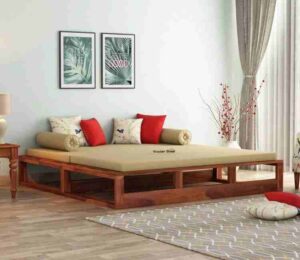
Jewellery has always held a special place in a woman’s life, especially when it comes to traditional jewellery. Rich in culture, heritage, and timeless elegance, these pieces are more than just accessories td
they’re heirlooms, statements, and expressions of identity.
Whether you’re building your personal collection or updating your ethnic wardrobe, here are 10 must-have Traditional Jewellery pieces every woman should own.
1. Maang Tikka – A Forehead Statement of Elegance
Worn gracefully in the center of the forehead, the maang tikka adds a regal touch to any ethnic outfit. Whether you choose a simple pendant style or an elaborate polki design, it’s a quintessential piece for weddings and festive occasions.
Style Tip: Pair it with a lehenga or saree for a complete bridal or festive look.
2. Jhumkas – The Timeless Danglers
No traditional jewellery collection is complete without a classic pair of jhumkas. These bell-shaped earrings come in countless variations—temple design, kundan, pearl-detailed, or oxidized silver.
Why Own Them: They’re incredibly versatile and look stunning with both sarees and kurtis.
3. Choker Necklace – Royal and Ravishing
The choker is a bold, neck-hugging piece that instantly elevates any outfit. Popular in both North and South Indian traditions, chokers made with kundan, meenakari, or polki work are especially coveted.
Pro Tip: Layer with a longer necklace for added drama.
4. Mangalsutra – A Symbol of Love and Tradition
More than a piece of jewellery, the mangalsutra is a sacred ornament for married women in Indian culture. Today’s designs range from classic black-beaded gold chains to modern, minimal interpretations that can be worn daily.
Modern Take: Look for lightweight mangalsutras that double as everyday wear.
5. Kadas or Bangles – Grace for Your Wrists
From intricately carved gold kadas to colorful glass bangles, wrist adornments are central to Indian tradition. In some cultures, bangles symbolize prosperity and marital status.
Must-Have: A set of gold or kundan bangles can beautifully complement most ethnic outfits.
6. Nath (Nose Ring) – A Daring Traditional Statement
Once worn only by brides, the nath or traditional nose ring has become a bold fashion statement. Designs range from tiny studs to large hoops adorned with pearls or chains.
Occasion Wear: Best reserved for weddings, sangeets, or cultural festivals.
7. Payal (Anklets) – A Delicate Touch of Tradition
Payals, or anklets, add a subtle yet musical charm to a woman’s walk. Crafted in silver with tiny bells, or in gold for more opulent styles, they are a staple in traditional Indian wear.
Traditional Touch: Often worn in pairs and layered for a fuller look.
8. Rani Haar – Fit for a Queen
As the name suggests, the rani haar is a long, royal necklace often paired with chokers for grand occasions. It’s usually embedded with gemstones or kundan work, exuding pure elegance.
Best For: Weddings, receptions, and traditional ceremonies.
9. Waist Belt (Kamarbandh) – The Finishing Touch
A beautiful kamarbandh accentuates the waist and enhances the silhouette of sarees and lehengas. It’s both ornamental and functional, helping keep drapes in place while adding ornate charm.
Style Tip: A slim gold kamarbandh looks stunning on silk sarees.
10. Toe Rings (Bichhiya) – A Cultural Must-Have
Traditionally worn by married women, toe rings are often made of silver and are associated with Ayurvedic health benefits. They’re also a beautiful nod to Indian traditions when paired with ethnic footwear.
Bonus: They add an elegant touch to bare feet during cultural ceremonies or poojas.
Final Thoughts: Build Your Heritage with Traditional Jewellery
Every piece of traditional jewellery tells a story of culture, of celebration, and of legacy. Whether you’re dressing for a wedding, a festival, or simply want to honor your roots, these timeless pieces deserve a place in every woman’s jewellery box.
From bold chokers to delicate anklets, these ornaments are not just adornments they are carriers of tradition, elegance, and identity. Start building your own timeless collection today, one piece at a time.





